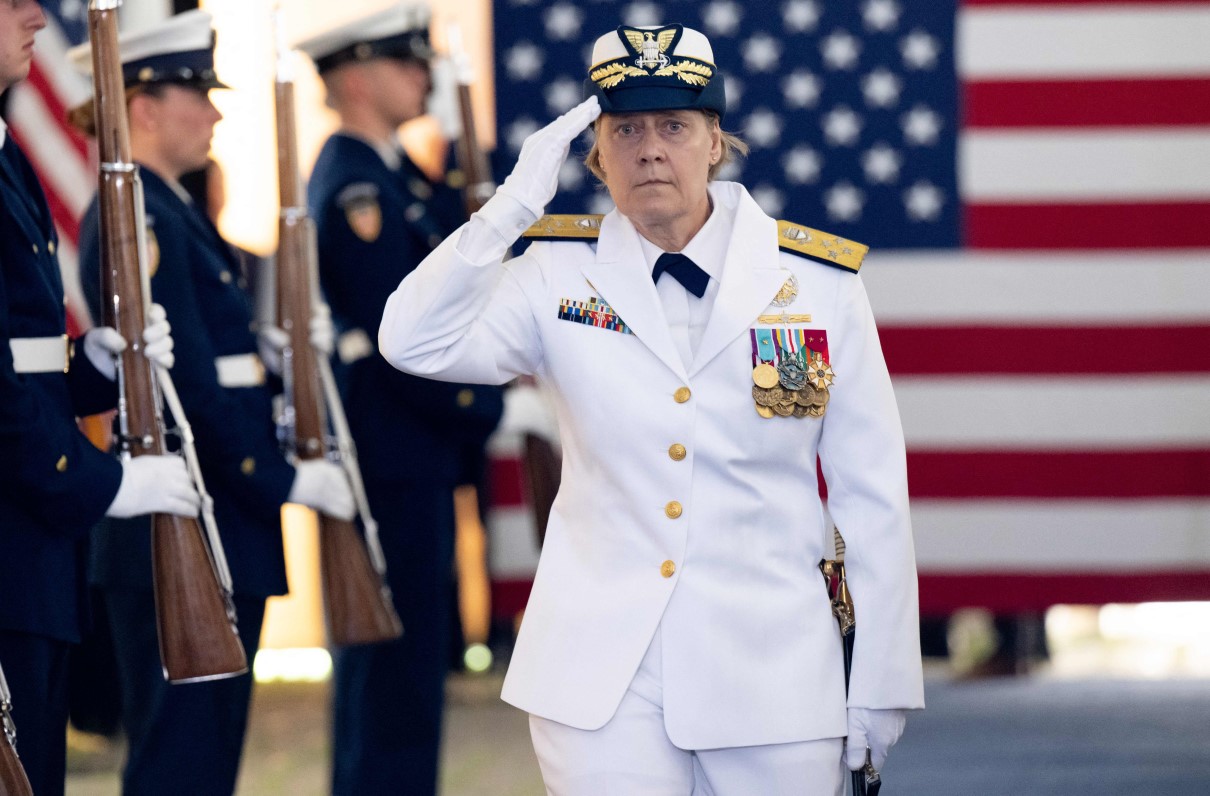The Coast Guard’s June 1 change-of-command ceremony did more than install the first woman service chief in our country’s history – it highlighted some of the priorities and challenges the service will face in the coming years, both externally and from within.
“The demand for the U.S. Coast Guard has never been higher,” said Adm. Linda Fagan, who took over as commandant from the retiring Adm. Karl Schultz. “Tomorrow will look different, and so will we.”
[WATCH THE CHANGE OF COMMAND: USCG.mil]
As Fagan assumed command, she notably wore the shoulder boards of Commandant Adm. Owen Siler, who integrated the U.S. Coast Guard Academy. Women made up 8% of Fagan’s Class of 1985; they make up 40% of the most recent class.
President Joe Biden highlighted some of the service’s traditional duties during the ceremony, pointing out one-quarter of U.S. gross domestic product travels on American waterways, and that the service must continue its work combating everything from illicit drug trafficking to unregulated fishing.
Fagan embodies other key parts of the future of the service: Her 36-year career began as a deck watch officer on the USCGC Polar Star (WAGB-10), the service’s lone heavy icebreaker, which was commissioned in 1976. The Coast Guard will tackle increasingly contested northern waters during her tenure.
[RELATED: What Does a Warming Arctic Region Mean for the Military?]
Service Families
Fagan and her predecessor also highlight another common thread of uniformed service – both have children serving in the Coast Guard. Ensign Eric Schultz graduated from the Coast Guard Academy in 2021, five years after Lt. Aileen Fagan.
[TAKE ACTION: Tell Congress to Protect Our All-Volunteer Force and Maintain Our Professional Advantage]
Although the tradition of service makes families intensely proud, the services have become reliant on this small group of families as the propensity to serve across the country is in decline.
Last month, Army Chief of Staff Gen. James McConville, whose children also serve, told Congress that 83% of recruits are coming from military families and that only 23% of the recruiting pool can meet the physical and mental standards for service.
[RELATED: Here’s Why Proposed Personnel Cuts Threaten the All-Volunteer Force]
Retention becomes even more important when faced with such stark recruiting challenges. Fagan said her highest priority as commandant will be to “transform our talent management system” with an eye toward empowering those in service.
“This transformation is an investment in you,” she told Coast Guard personnel during the change-of-command event. “Without you, steel does not move, lives are not saved, and our national prosperity and security is at risk. … You have answered the call to serve. We will be the Coast Guard where you can perform your best and bring your best to the potential that is this nation.”
Every Officer Has Two Families
For over 90 years, MOAA has been working to get servicemembers and their families the benefits they deserve.

